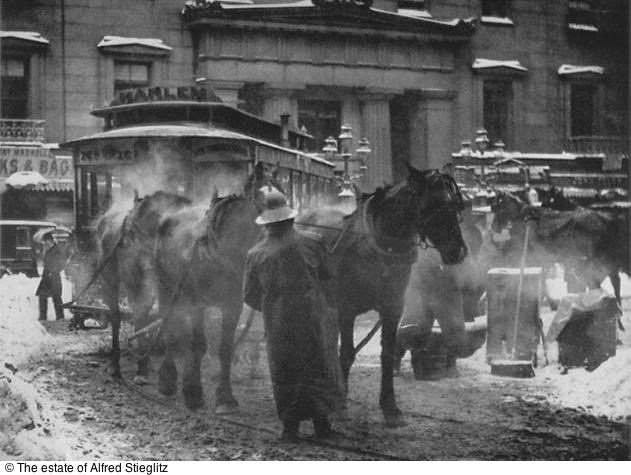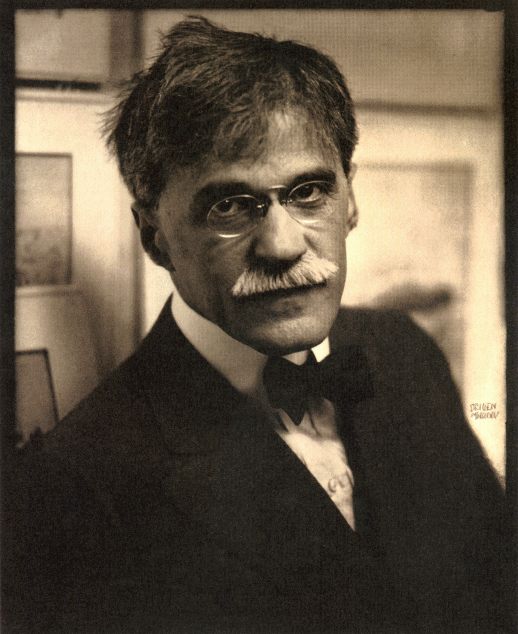A change agent.
The American photographer Alfred Stieglitz (1864-1946) took photography out of its early frou frou era and into the modern world. He was not only a fine photographer, he was also a great promoter of other artists, including photographers, painters and writers, primarily through his 291 Gallery in New York. In all things artistic, Stieglitz was on the cutting edge of the avant garde.

The Steerage, 1908
His best known image is The Steerage where, as a passenger on board the first class section of a ship to France he chanced on the image of the fourth class passengers in what was known as ‘The Steerage’ – maybe because the people were herded in there like steers. Rent the PBS documentary on Stieglitz from Netflix and you will hear how, when he first saw the crowd, he was fixated by the straw topper and the white suspenders; he dashed back to his cabin for his monster plate camera, one exposure left, and captured this stunning image – no one had moved. Twenty-five years later a young Cartier-Bresson was doing much the same, albeit with a strong dose of surrealism added, but he could bang away over three dozen times, with his pocket sized Leica. Not that he needed to.
Even in his earlier work, Stielglitz’s sense of immediacy was in abundant evidence.

The Terminal, 1893
This is the New York location where horses pulling streetcars, before the days of electrification, were changed. The photograph is electric, not just for its historical interest but also because of the sense that you are there. You can almost smell what’s happening.
Stieglitz was a class act, selfless in his support of fellow artists not least, in later life, of his great love Georgia O’Keeffe, another transformational American modern painter.

Stieglitz in middle age.
The PBS documentary is an excellent place to start if you are new to Alfred Stieglitz.